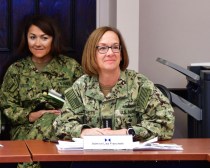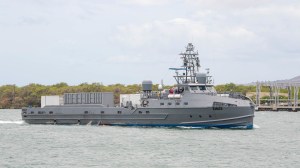Navy plying new tactics while pairing kamikaze drones with robo-ships

U.S. Naval Forces Central Command is steaming ahead with experimental efforts to launch unmanned aerial vehicles from uncrewed surface vessels.
The latest Digital Talon exercise, conducted earlier this month in the Middle East region, included a variety of robotic capabilities that could play a significant role in future conflicts.
“Digital Talon 3.0 … tested the electronic and mechanical effectiveness of robotics and autonomous systems (RAS), the capabilities of over-the-horizon communications between unmanned systems, and testing aerial autonomous launch and recovery of an unmanned aerial vehicle (UAV) off a unmanned surface vessel (USV),” NAVCENT stated in a press release Sunday.
The exercise involved Task Group 59.1, which was established earlier this year and reports to Task Force 59 — a key unit based in the Middle East under 5th Fleet that’s helping the Navy operationalize AI and uncrewed platforms for real-world missions.
“Under Digital Talon 3.0 we were able to test the remote launch of a loitering munition, and vertical take-off and landing of UAVs from a USV,” Lt. Luis Echeverria, commanding officer of the new task group, said in a statement, adding that these “evolutions resulted in the successful remote launch of a loitering munition at sea.”
This wasn’t the first time that a robo-ship operated by the Navy launched a kamikaze drone.
During a Digital Talon exercise last year, the unit successfully attacked a target boat with a “Lethal Miniature Aerial Missile System” fired from a MARTAC T-38 Devil Ray USV, according to officials.
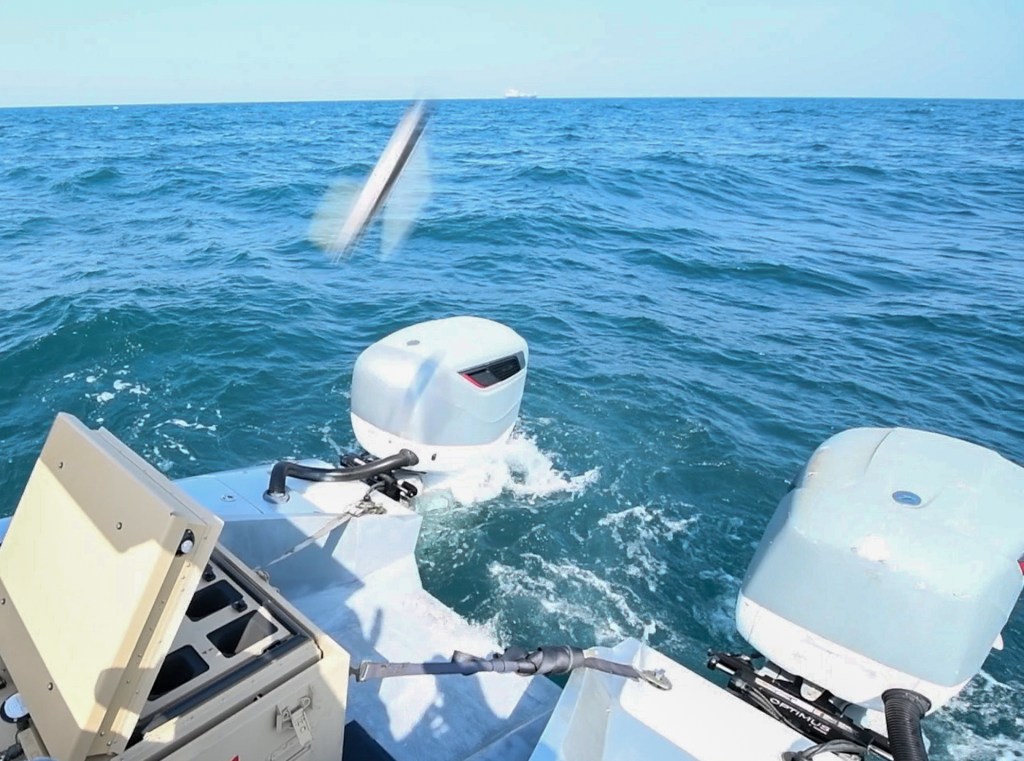
However, the latest iteration of the exercise expanded the over-the-horizon capabilities of these types of uncrewed systems, according to Echeverria.
These efforts are unfolding as the Navy steams ahead with new initiatives to incorporate more unmanned and autonomous technologies into the force.
The sea service established a new “robotics warfare specialist” general rating earlier this year.
“RW Sailors will enable Robotic and Autonomous System (RAS) operations and maintenance at the tactical edge. RWs will be the subject matter experts for computer vision, mission autonomy, navigation autonomy, data systems, artificial intelligence and machine learning on our RAS platforms,” according to a NAVADMIN announcement from Chief of Naval Operations Adm. Lisa Franchetti released in February.
In September, Franchetti unveiled “Project 33,” which is part of her “CNO Navigation Plan” and places a heavy emphasis on robotic systems and information dominance as the service prepares for a potential conflict with China in the Indo-Pacific.
“The Chairman of the People’s Republic of China (PRC) has told his forces to be ready for war by 2027 — we will be more ready,” Franchetti wrote, acknowledging that the Defense Department “cannot manifest a bigger traditional Navy in a few short years.”
Incorporating more robo-ships and other uncrewed platforms into the fleet is seen as a solution to that problem.
“Project 33 is how we will get more ready players on the field by 2027,” she added, stating that the sea service will by then have integrated proven robotic and autonomous systems for routine use by the commanders who will employ them.
Senior Navy officials envision these types of systems as being useful for sea-denial missions.
Adm. Samuel Paparo, commander of U.S. Indo-Pacific Command, said unmanned platforms like those that are part of the Pentagon’s Replicator initiative offer significant benefits. They fit in with the “Hellscape” warfighting concept that he’s laid out for a potential conflict with China in the Taiwan Strait.
“Certainly, these systems are ideal in enclosed spaces … if you can deploy it,” he said last week at a Brookings Institution event. “For closed spaces, for executing sea denial, this can be a very key capability.”
Technologies that the Pentagon is trying to accelerate under Replicator include loitering munitions and other types of drones, USVs and unmanned underwater vehicles, among other tools.
Last week, the Defense Innovation Unit, which is playing a key role in the initiative, unveiled the recent winners of Replicator software contracts.
Meanwhile, Task Force 59 and Task Group 59.1 aren’t the only Navy units experimenting with new unmanned systems.
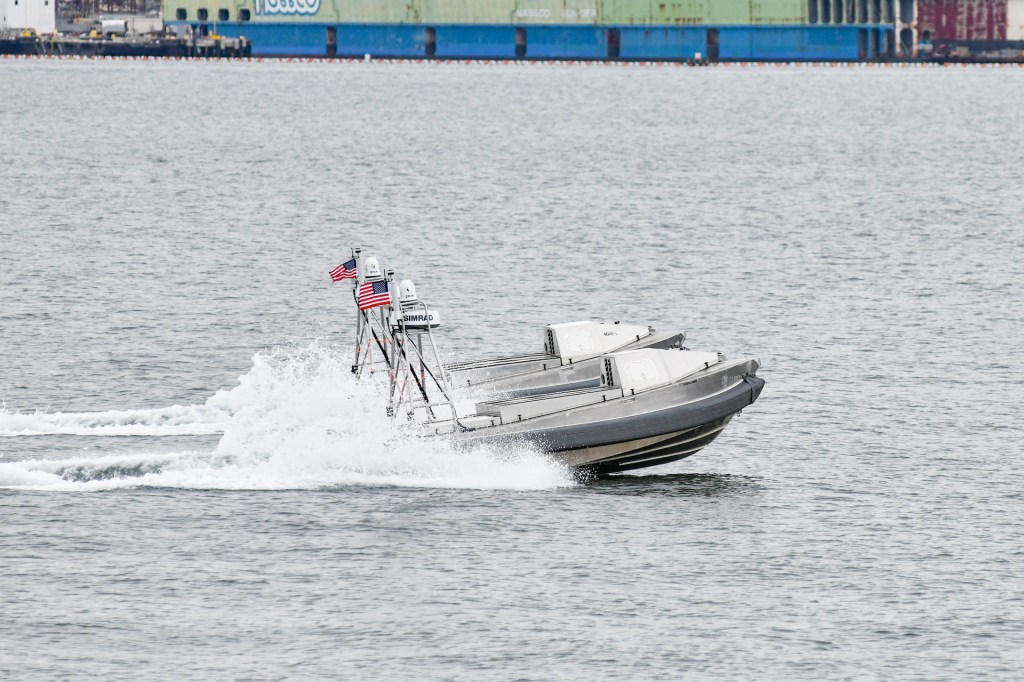
Earlier this year, the service stood up Unmanned Surface Vessel Squadron Three (USVRON Three) in San Diego to oversee a “fleet” of small uncrewed surface vessels, including the Global Autonomous Reconnaissance Craft (GARC). The organization is expected to help build the foundational knowledge required to operate and maintain small USVs and develop tactics, techniques and procedures for operations and sustainment, according to officials.
Using uncrewed surface vessels to launch loitering munitions and other types of UAVs could be a new tactic that the Navy introduces for warfighting in the coming years.
The first two Digital Talon exercises, held about a year ago, “advanced lethality and kinetic applications for unmanned systems,” but version 3.0 “examined more advanced tactics,” according to the NAVCENT news release, which attributed the observation to Royal Navy Lt. Samuel Hendy, executive officer of Task Group 59.1.

“As with all pioneering ventures and first-of-its-kind feats, there are plenty of challenges to overcome, lessons to be analyzed, but we are a learning organization and it all combines to further benefit 5th Fleets’ understanding and employment of this state-of-the-art warfare,” Hendy said in a statement. “If there is one thing we can take away, Digital Talon 3.0 affirms that the U.S. Navy, as well as her partner nations, remains at the forefront of cutting-edge unmanned system integration and deployment.”
The loitering munition fired during the exercise was a Switchblade 600, a NAVCENT spokesperson told DefenseScoop. That platform, built by AeroVironment, is also one of the systems selected for accelerated acquisition by the U.S. military via Replicator.
The drone is designed to carry high-precision optics and an anti-armor warhead. It has upwards of 40 minutes of loitering endurance, a range of 40-plus kilometers, and a “sprint speed” of 185 kilometers per hour, according to a product description from the vendor. The all-up round weighs 65 pounds.
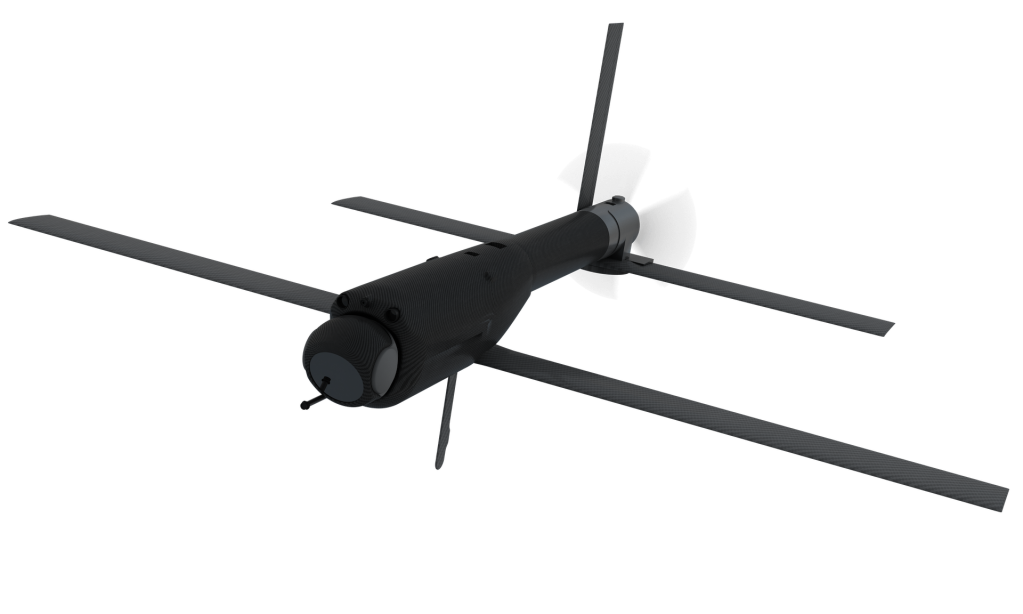
“Equipped with class-leading, high-resolution EO/IR gimbaled sensors and advanced precision flight control, Switchblade 600 empowers the warfighter with quick and easy deployment via tube-launch, and the capability to fly, track and engage non-line-of-sight targets and armored vehicles with precision lethal effects without the need for external ISR or fires assets,” according to a company product description, which noted that the system’s “wave-off and recommit capability allows operators to abort the mission at any time and then re-engage either the same or other targets multiple times based on operator command.”
With regard to the USV and other drones that were involved in the latest Digital Talon exercise, the NAVCENT spokesperson said: “Specific effects and capabilities relevant to Digital Talon 3.0 were provided via GSA contracts for contractor-owned, contractor-operated platforms.”
The commander of Special Operations Forces Central Command, Avenger-class mine countermeasures ship USS Devastator, U.S. Coast Guard Sentinel-class fast response cutter USCGC Emlen Tunnell and industry partners also participated in the event, according to NAVCENT.
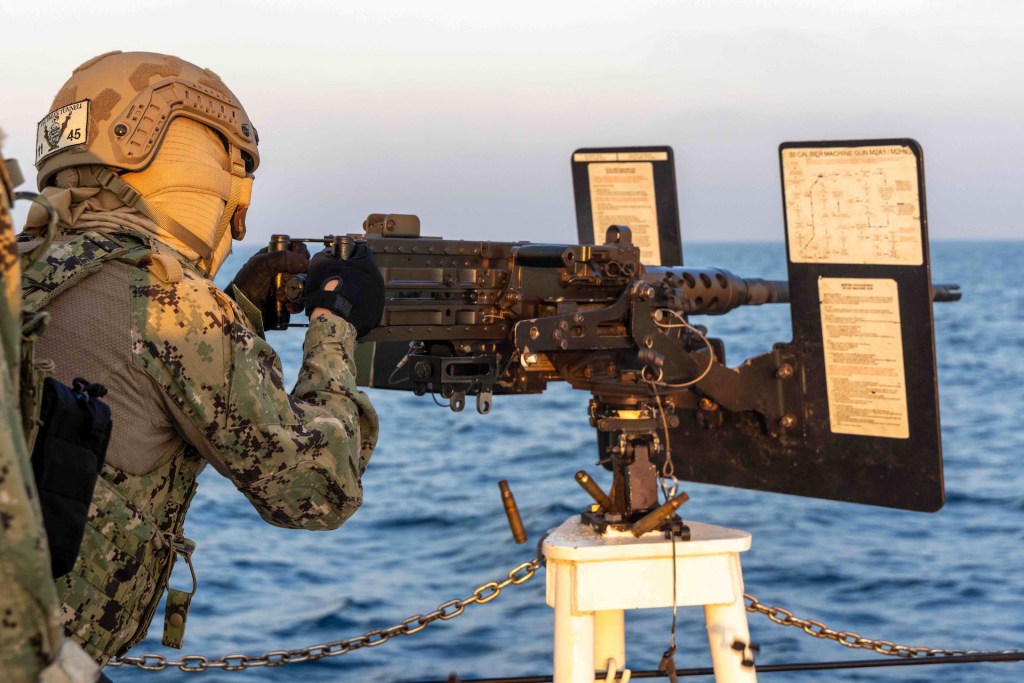
Updated on Nov. 26, 2024, at 3:30 PM: This story has been updated to include additional information provided to DefenseScoop by a NAVCENT spokesperson regarding the loitering munition and other capabilities that were involved in Digital Talon 3.0.

